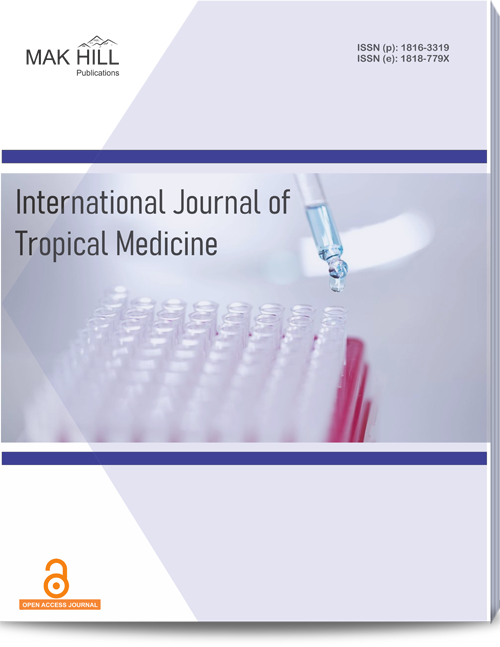
International Journal of Tropical Medicine
ISSN: Online 1818-779XISSN: Print 1816-3319
Abstract
Bacteria have existed from very early in the history of life on earth. The type of disease produced by a particular microbe is often a direct consequence of its route of entry into the body. The emergence of resistance of bacteria to antibacterial drugs is a common phenomenon. The most common pathogens are Escherichia coli, nosocomial gram‐negative bacilli, enterococci and Candida. Intensive Care units (ICUs) despite their apparent impact on patient outcome have become high‐risk areas for nosocomial infections. The patient in the ICU has a 5‐7 fold higher risk of a nosocomial infection compared with the average patient and 20‐25% of all nosocomial infections develop in ICUs. The study was conducted at the MICU of a tertiary care centre from January 2013 to December 2014. The sample size taken for this study was 820 patients fulfilling the inclusion and exclusion criteria. The bacterial isolates were obtained from a large range of samples such as sputum, blood, urine, pus, tracheal secretions etc. of the patients admitted to MICU. Further the samples were processed for the culture and their resistance testing at the Department of Microbiology. Out of the 820 samples, bacterial isolates were obtained from 342 samples (41.70%).In the year 2013, number of isolates obtained was 105 (30.70%): Gram negative 84.76% whereas in 2014, number of isolates obtained was 237 (69.29%): Gram negative 71.30%. Out of these, 312 samples were from respiratory secretions, 9 from urine, 8 from blood and 13 were from miscellaneous. Surface swabs were collected from ventilator, medicine trolley and floor and studied separately (21 of each, every year) samples. Prevalance of bacterial infection varies at different health centres. Klebsiella pneumoniae was most prevalent organism over study period followed by Pseudomonas spp. Respiratory isolates were least resistant to Carbapenems, Piperacillin‐Tazobactum during the study period. Urinary isolates were found least resistant to Amikacin and Meropenem. Of the various surface swabs sent, 81% of ventilator swabs and 86% of each trolley and floor swabs were sterile.
How to cite this article:
Prasad S. Korulkar and Shailaja V. Rao. Bacterial Infection Prevalence and Their Microbial Resistance Pattern in MICU.
DOI: https://doi.org/10.36478/10.59218/makijtm.2023.121.125
URL: https://www.makhillpublications.co/view-article/1816-3319/10.59218/makijtm.2023.121.125